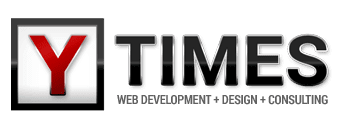The built-in templates
Turbify comes with built-in templates. Before we go into changing or creating new templates it is helpful to understand the built-in ones. There are a few dozen such built-in templates, and because there are no instructions as to what these templates do, it can be a little intimidating at first to try to tackle them. Fortunately you dont need to understand every single template before you can make some impressive changes or create your own templates.
If your store uses editor V2.0, you can click "Templates", and then look at the home. template for example. That template generates the home page. Without much RTML knowledge, you will be able to see some familiar pieces in that template. It starts out like this:
HEAD
WHEN NONEMPTY @keywords
META name "Keywords"
content @keywords
TITLE IF test NONEMPTY @page-title
then @page-title
else @title
TEXT @head-tags
So, as you may have guessed, the above piece is responsible for generating the <head>...</head> section of the home page. It creates the keywords meta tag, then adds the <title>...</title> tag, finally, it outputs the contents of the head-tags variable. The rest of the template may seem a bit foreign, but it too is full of things you may recognize, such as the BODY tag, top or side navigation bar generation, etc.
If your store is based on editor V3.0, click on "Templates" and then look at the storetemplate. template. This template is responsible for generating all the pages in your store. Although this template looks different than version 2's home. template for example, here too, you will come across some familiar pieces. There is a HEAD section here is well, for instance:
HEAD
TITLE IF test NONEMPTY @page-title
then @page-title
else IF test NONEMPTY @name
then @name
else @title
WHEN NONEMPTY @description
META name "Description"
content @description
WHEN NONEMPTY @keywords
META name "Keywords"
content @keywords
CALL :css.
TEXT @head-tags
Here, too, you see the <title>...</title> tag being generated, then a description and keyword meta tag, then there is a call to the css. template (to insert links to the built-in CSS style sheets), and finally to output the head-tags variable.
As we said earlier, RTML templates are evaluated from top to bottom. You can
see how the store properties and variables are used in the templates look
out for the @ in front of property names. You will also come across
constants those with a : colon in front; these usually refer to the
value from a dropdown list of a variable, or pass an attribute to a RTML
expression (such as left, right or center).
Templates are evaluated within the context of page (or object) in the store.
Every page in Turbify has a unique id (which is also the name of the
published HTML file). So when you see something like TEXT @name, this means to
output the name of the current page. It's the same template, but the
output will be different from page to page. Within a template it is possible to
change the context and switch to another id, or in other words, to impersonate
a different page and use its properties. This is a very important concept
because it allows you to pull information from other pages automatically.
Another important characteristics of RTML is nesting. You will see that some expressions are indented within others. Unlike in other programming languages, where indentation is typically used to make code easier to read, in RTML indentation is extremely important. Here, nesting defines the scope of an instruction. Take the following example:
TABLE border 0
cellspacing 0
cellpadding 0
width wid
TABLE-ROW valign :top
TABLE-CELL
ORDER-FORM
This will generate the following HTML:
<table border=0 cellspacing=0 cellpadding=0 width=xyz> <tr> <td> ... </td> </tr> </table>
whereas this:
TABLE border 0
cellspacing 0
cellpadding 0
width wid
TABLE-ROW valign :top
TABLE-CELL
ORDER-FORM
generates the following incorrect HTML:
<table border=0 cellspacing=0 cellpadding=0 width=xyz></table> <tr></tr> <td> ... </td>
Calling other templates
You can see very quickly when and where other templates are called. Look out
for the CALL expression and the red rectangle next to it. The rectangle
hyperlinks to the called template.
The same template can be called by several other templates. Take for example the
side-nav. template. The side-nav. template, as is implied by its
name, puts together the side navigation. It makes sense that the side-nav
navigation is called by several templates because the side navigation has to be
displayed on most pages.
You cannot edit the in-built templates. You can only create your own templates
from scratch or copy the built-in templates. This is also your safeguard: if you
mess up your new templates you know you can always revert back to the built-in
templates.
